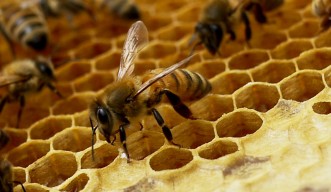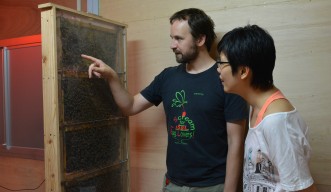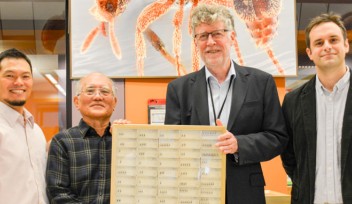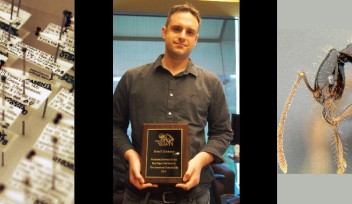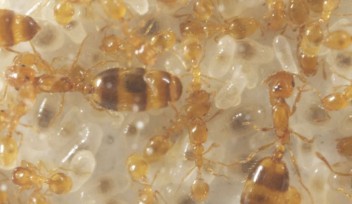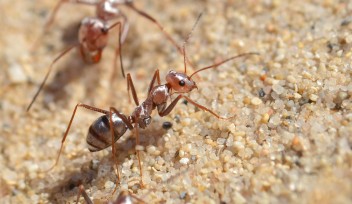Honey Bees Rapidly Evolve to Overcome New Disease
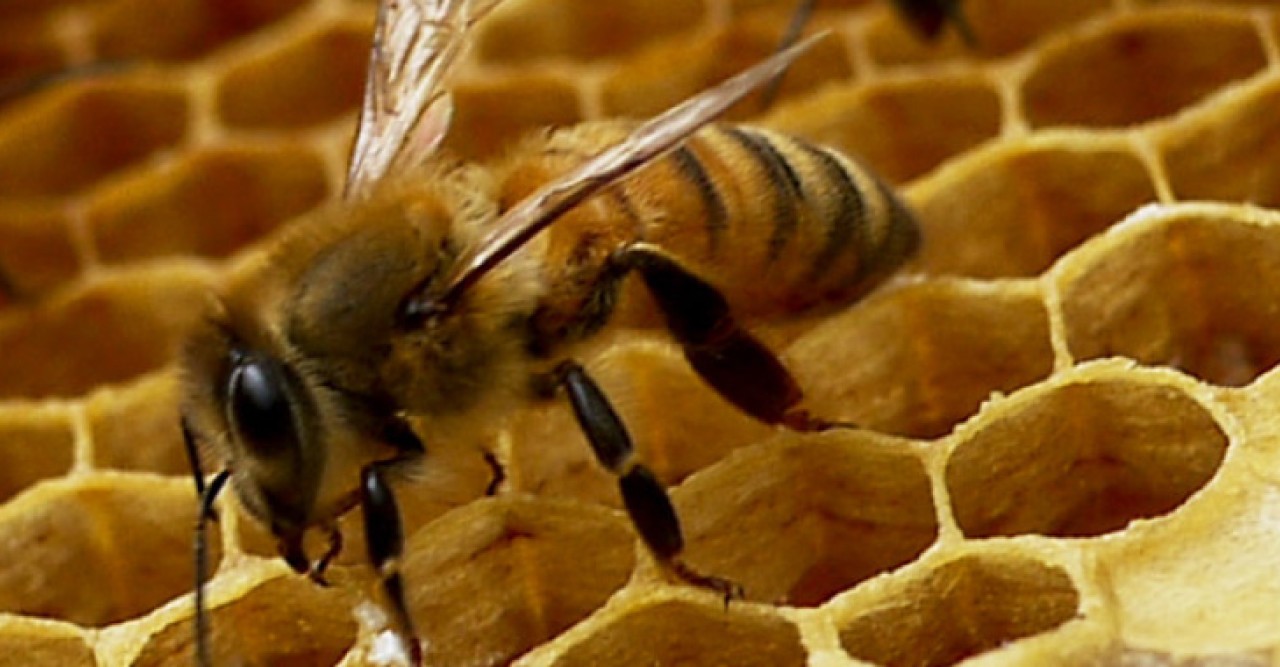
An international research team has some good news for the struggling honeybee, and the millions of people who depend on them to pollinate crops and other plants.
These valuable pollinators have faced widespread colony losses over the past decade, largely due to the spread of a predatory mite called Varroa destructor. But the bees might not be in as dire a state as it seems, according to research recently published in Nature Communications.
Researchers found a population of wild bees from around Ithaca, New York, which is as strong today as ever, despite the mites invading the region in the mid-1990s.
“They took a hit, but they recovered,” said Alexander Mikheyev, a professor at the Okinawa Institute of Science and Technology Graduate University (OIST) in Japan and lead paper author. “The population appears to have developed genetic resistance.”
Mikheyev and his collaborators at OIST and Cornell University studied the population genetics of the wild colony by comparing the DNA of specimens collected in 1977 with bees collected from the same forest in 2010. To conduct the study, they developed a new DNA analysis tool that works especially well for degraded DNA stored in museum samples.
Such a study is extremely rare, especially with bees. Few people collect them, and even fewer collect in a way that is good enough for a population level study. Luckily, Cornell Professor Tom Seeley worked in this area during his Ph.D., and deposited his samples in the Cornell University Insect Collection. This is the first time scientists have been able to observe genome-wide changes after a specific event like the mite invasion.
“By using museum specimens, we see how evolution happens as compared to how we think it happens,” said Mikheyev, who runs OIST’s Ecology and Evolution Unit.
Many people think of evolution happening over thousands or millions of years, but in fact, it is happening from generation to generation. External forces cause certain traits to be selected and passed on to offspring to enhance their chance of survival and reproduction. By comparing bees from the same colony only a few decades a part, the team was able to see this natural selection in action.
The bees changed in several different ways.
First, mitochondrial DNA, the genetic material stored in cells’ power plants, changed significantly from the older generation to the newer generation. That genetic material is only passed on from the mothers, so a major change indicates the old queen bees were wiped out and there were large-scale population losses. Even so, the population still maintained a high level of genetic diversity throughout the rest of genome, which is stored in the cell nucleus. Genetic diversity is the raw material for evolution, and high genetic diversity increases the chance for successful adaptation.
One of the most interesting changes in the bee population was in a gene related to a dopamine receptor known to control aversion learning. Another study has suggested this receptor is involved with bees grooming themselves to get rid of the mites by chewing them up.
The researchers also found many changes in genes associated with development. Mites reproduce and feed on the bee during the bees’ larval stage, so the researchers hypothesize that bees evolved to disrupt that process. Also, there were physical changes – today’s bees are smaller than the older bees and their wing shape is different.
The researchers note changes observed cannot be prescribed to any one factor, such as the mites, because the timeframe is too long. However, many of the changes are too large to be due to random genetic fluctuations, or the introduction of genes from other sources, like Africanized bees, and found the strongest driver of the observed changes was still natural selection.
“These findings identify candidate genes that could be used for breeding more resistant bees, such as the dopamine receptor gene,” Mikheyev said. “More importantly, it suggests the importance of maintaining high levels of genetic diversity in domestic bee stocks, which may help overcome future diseases.”
Specialties
For press enquiries:
Press Inquiry Form










